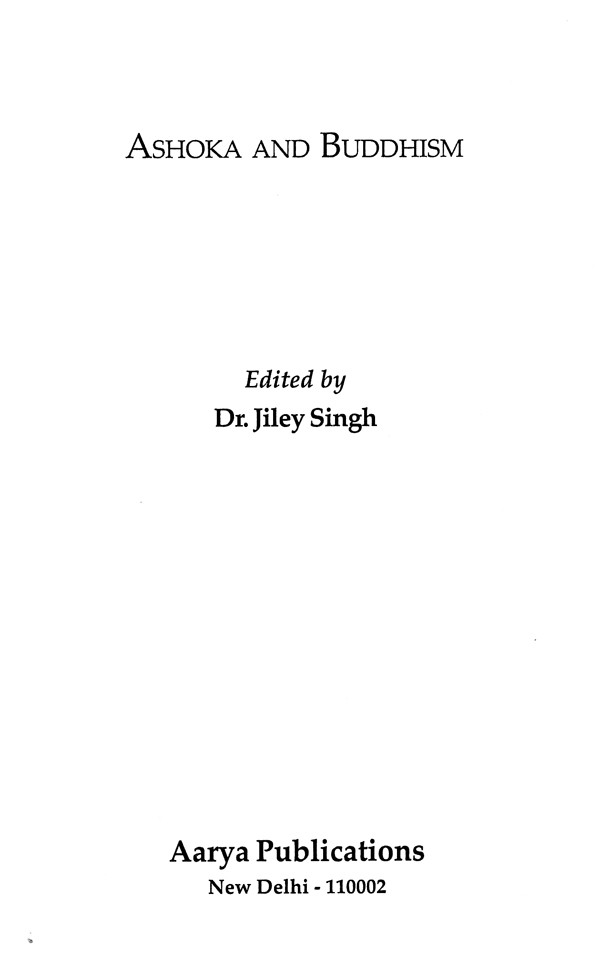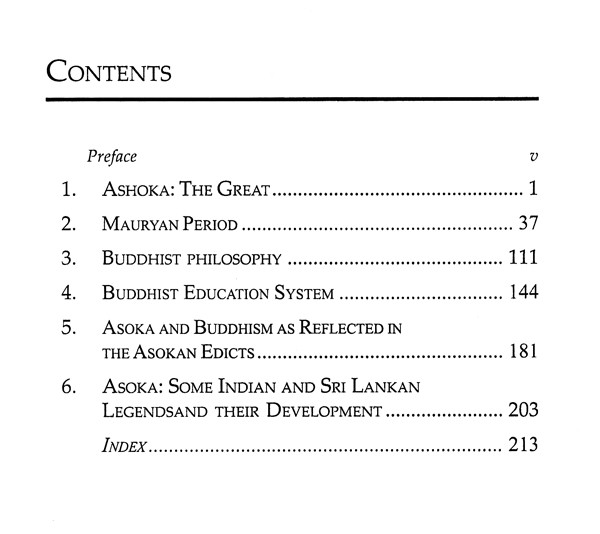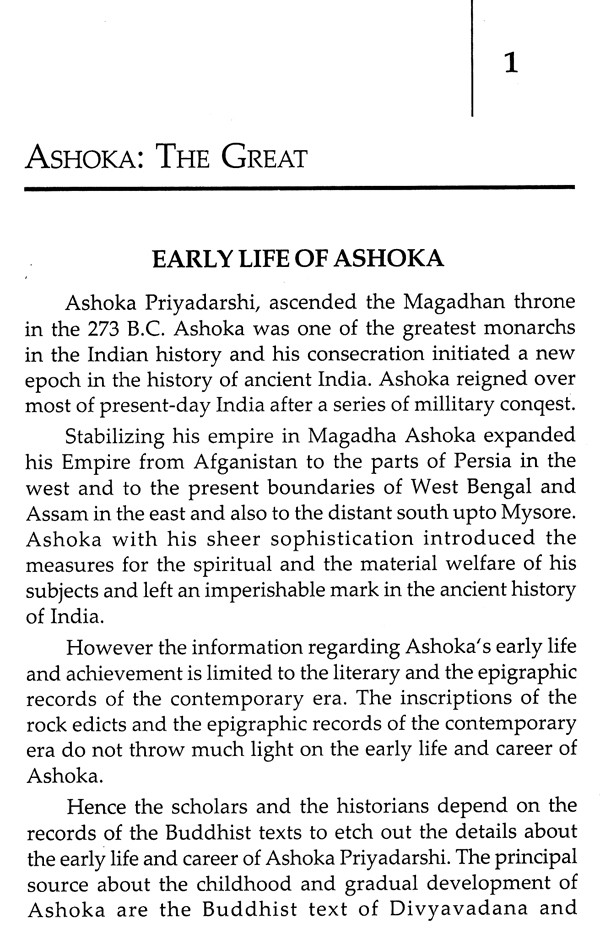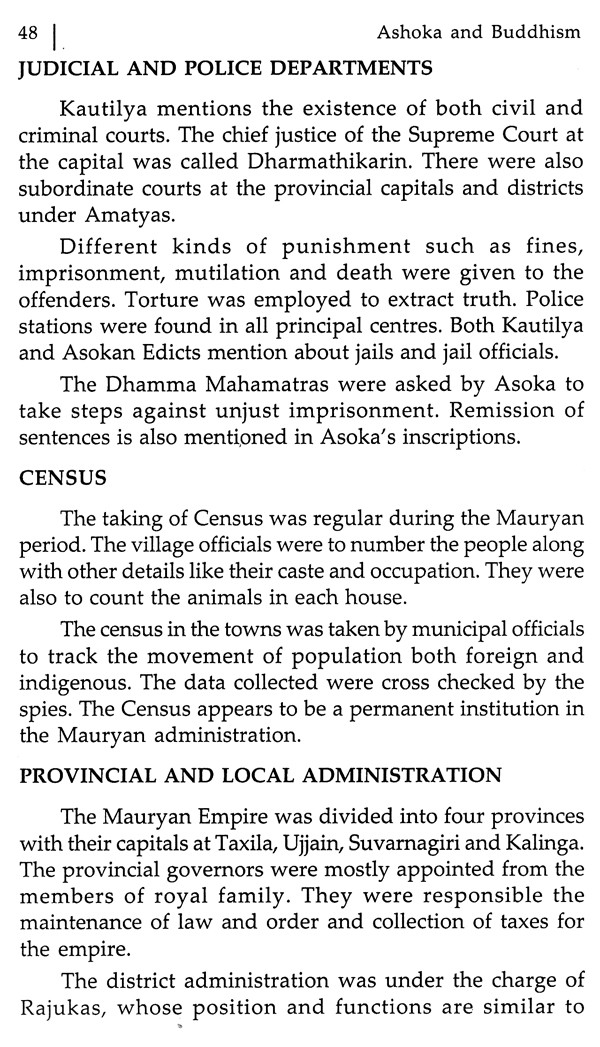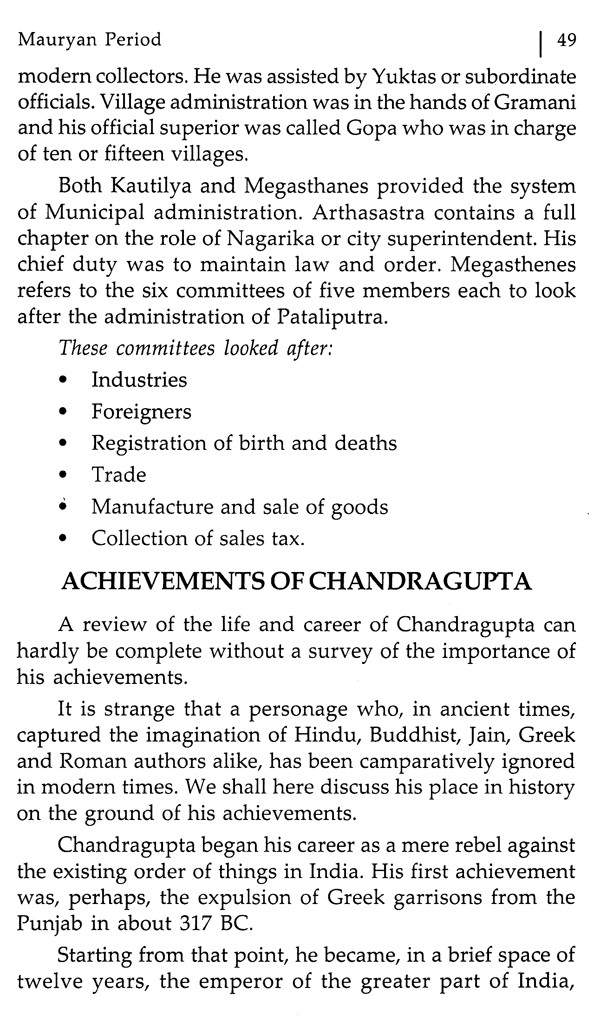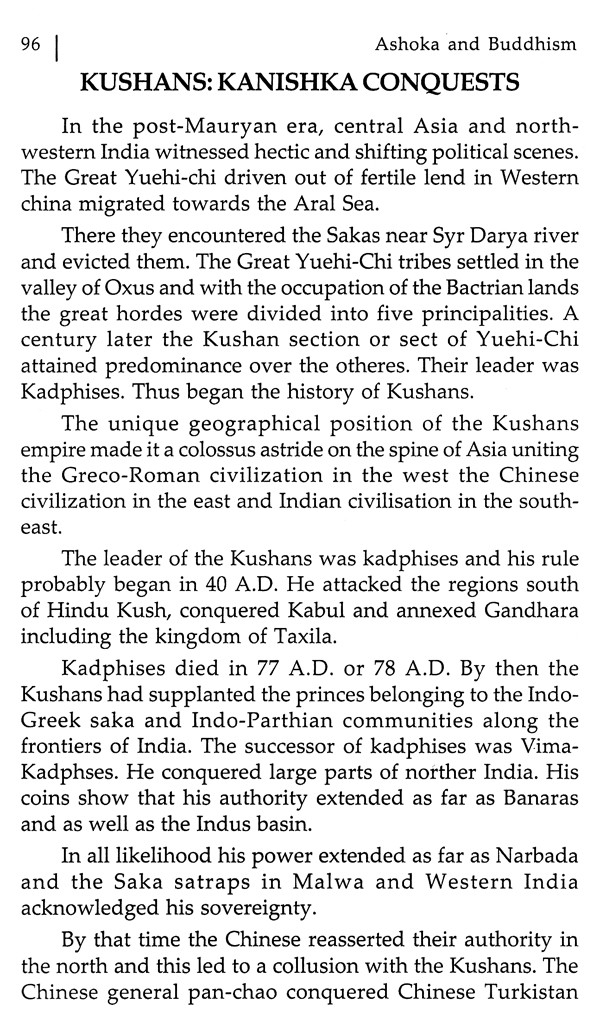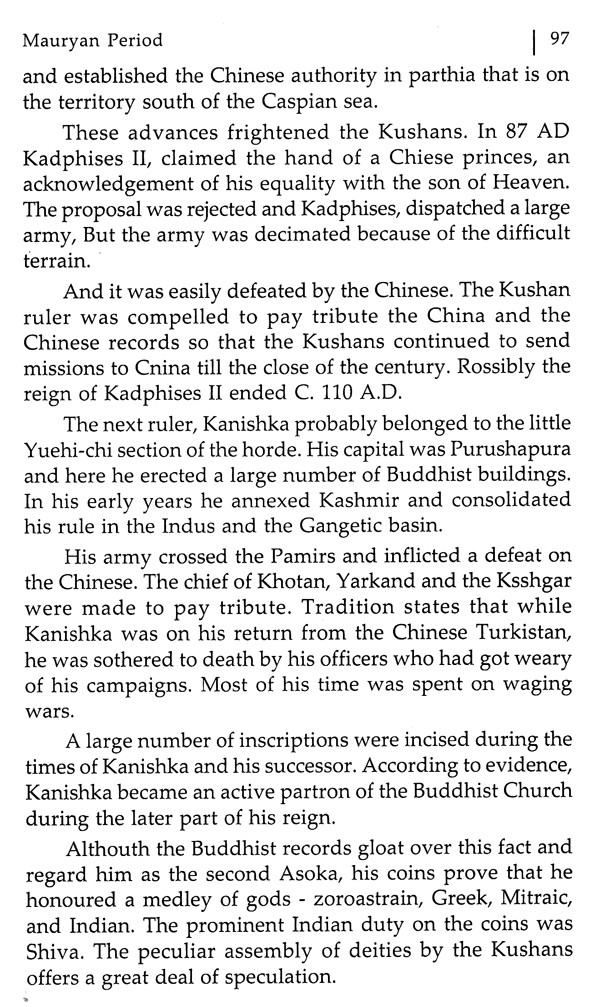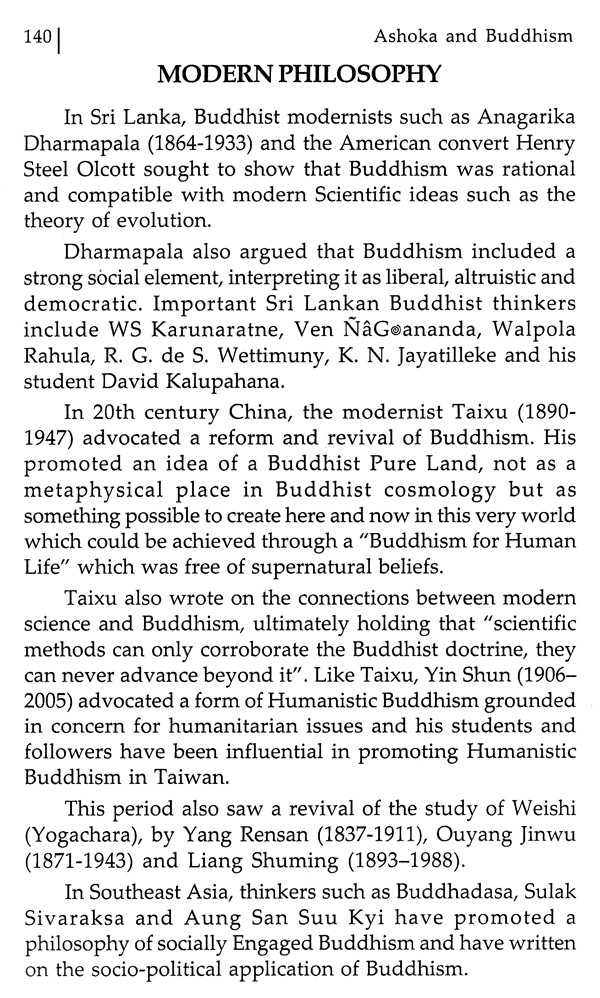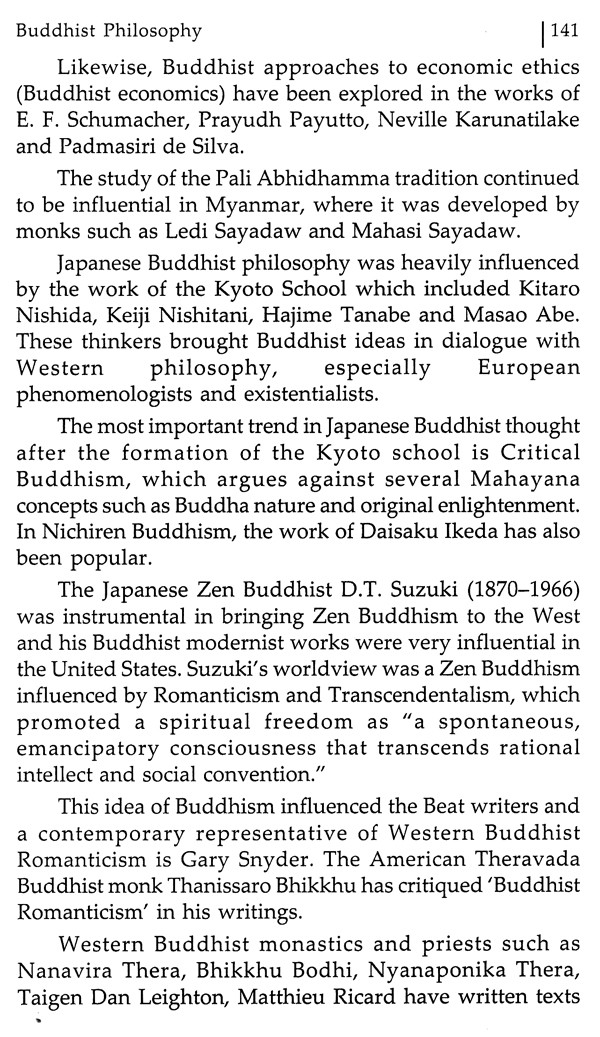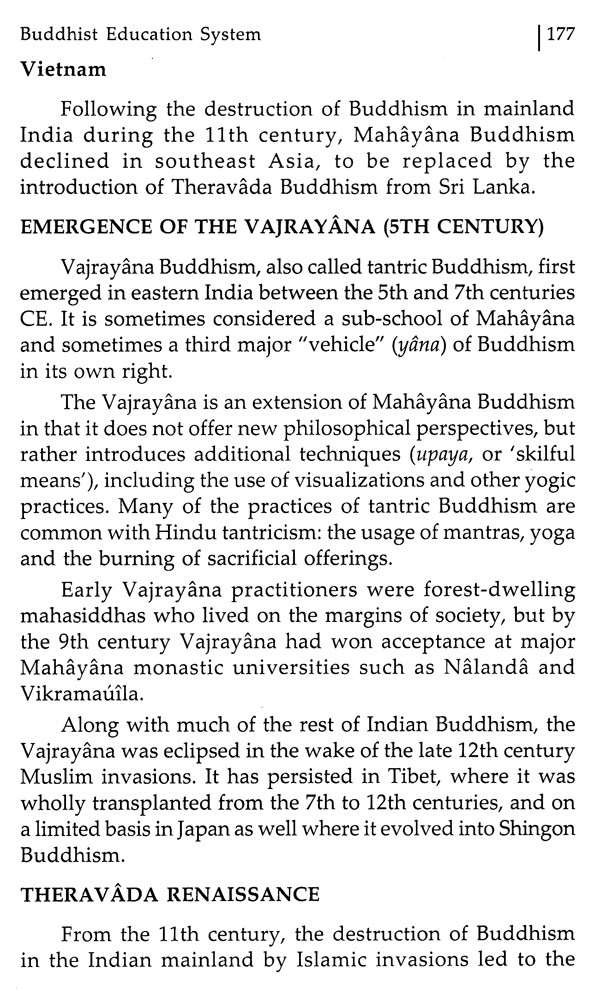
Ashoka and Buddhism
Book Specification
| Item Code: | UAX774 |
| Author: | Jiley Singh |
| Publisher: | Aarya Publications, Delhi |
| Language: | English |
| Edition: | 2011 |
| ISBN: | 9789381067499 |
| Pages: | 218 |
| Cover: | HARDCOVER |
| Other Details | 9.00 X 6.00 inch |
| Weight | 440 gm |
Book Description
The book the summation of a lifetime of research on Ashoka and Buddhism is an exceptionally comprehensive discussion of Buddhism. The work contains a vivid vigorous and fully detailed description of Ashoka and Buddhism and its teachings the material organization of the community the formation and further developments of Buddhist writings the conciliar traditions the evolution of Buddhist sculpture and architecture. In this book he explores the historical, religious, and social background to that movement, and assesses the considerable contribution made by Ashoka to the spiritual tradition in which he placed his trust.
Dr. Jiley Singh (b. 1960) completed B.A. and M.A. (Political Science) from Institute of Advance Study, Meerut University, M.Phil. (1985) and Ph.D. (1991) from H.P. University, Shimla. Dr. Singh started teaching profession since 1986 in the Deptt. of Political Science, 'Sanjay Gandhi PG College Sarurpur Khurd, Meerut. He was awarded IUC Associateship of Indian Institute of Advance Study, Shimla from 1993 to 1997. Presently Dr. Singh, being the Head of Political Science Deptt. is also working as Director, Buddhist Study Centre of UGC. Dr. Singh has contributed a number of books and published many articles in National and International Journals, organised to National Seminars sponsored by UGC and has supervised Ph.D. and M.Phil. students for the completion of their degrees.
Ashoka Maurya, commonly known as Ashoka and Ashoka the Great, was an Indian emperor of the Maurya Dynasty who ruled almost all of the Indian subcontinent from c. 268 to 232 BCE. One of India's greatest emperors, Ashoka reigned over a realm that stretched from the Hindu Kush mountains in Afghanistan to the modern state of Bangladesh in the east. It covered the entire Indian subcontinent except parts of present-day Tamil Nadu and Kerala. The empire's capital was Pataliputra with provincial capitals at Taxila and Ujjain.
As a Buddhist emperor, Ashoka believed that Buddhism is beneficial for all human beings as well as animals and plants, so he built a number of stupas, Sangharama, viharas, chaitya, and residences for Buddhist monks all over South Asia and Central Asia. According to the Ashokavadana, he ordered the construction of 84,000 stupas to house the Buddhas relics.
In the Aryamanjusrimulakalpa, Ashoka takes offerings to each of these stupas traveling in a chariot adorned with precious metals. He gave donations to viharas and mathas. He sent his only daughter Sanghamitra and son Mahindra to spread Buddhism in Sri Lanka.
Ashoka also sent many prominent Buddhist monks Sthaviras like Madhyamik Sthavira to modern Kashmir and Afghanistan; Maharaskshit Sthavira to Syria, Persia / Iran, Egypt, Greece, Italy and Turkey; Massim Sthavira to Nepal, Bhutan, China and Mongolia; Sohn Uttar Sthavira to modern Cambodia, Laos, Burma, Thailand and Vietnam; Mahadhhamarakhhita stahvira to Maharashtra; Maharakhhit Sthavira and Yavandhammarakhhita Sthavira to South India.
**Contents and Sample Pages**
